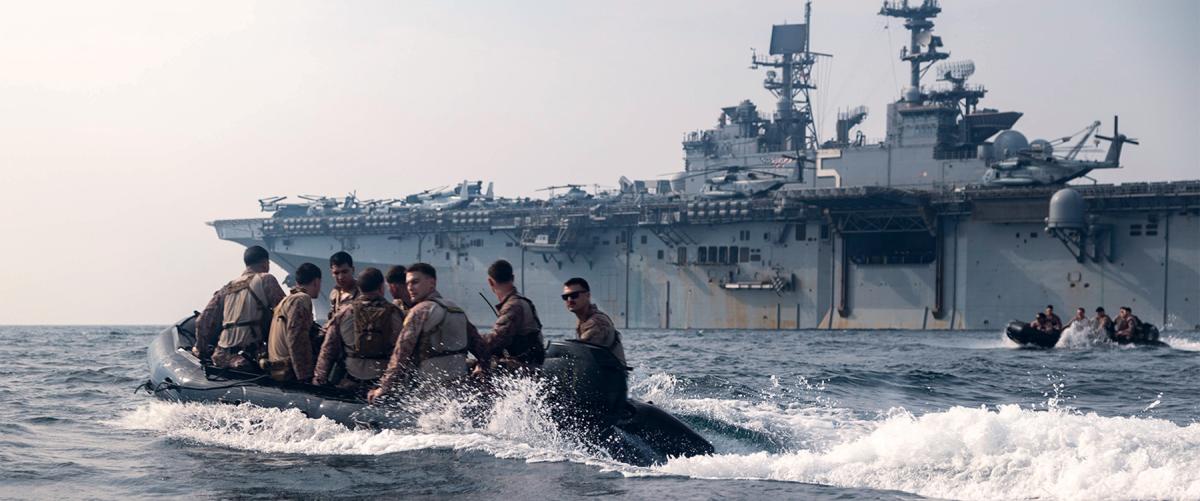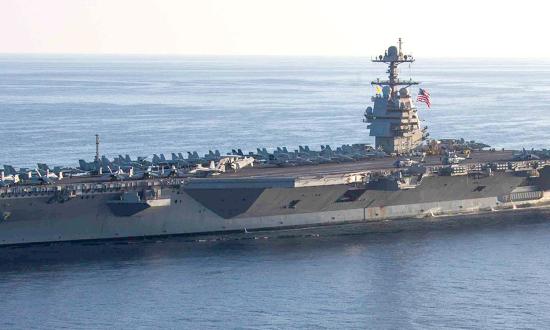“The Department [of Defense] strengthens deterrence and gains military advantages not only by building Joint Force capabilities, but also by campaigning—the conduct and sequencing of logically-linked military activities to achieve strategy-aligned objectives over time.”
—2022 National Defense Strategy
In October 2022, the Department of Defense released its National Defense Strategy and reintroduced a word and idea familiar to generations of Marines and sailors—campaigning. The general concept is not new, but the implications of its renewed use should serve as a wakeup call for the Sea Services. A deliberate refocus on campaigning requires reexamining how the Marine Corps can best contribute and align core concepts and doctrine with these efforts, particularly given ongoing and rising threats from China and elsewhere to U.S. national security interests in the world’s most critical maritime regions.
This reexamination requires us to expand and more closely link our global campaigning activities to strategic objectives while maintaining our crisis response capabilities. While this is a delicate balancing act, these efforts are not contradictory—rather, they are complementary. Campaigning is inherently deliberate and proactive, compared with many crisis response missions, which are inherently unpredictable and reactive; the Marine Corps is uniquely suited to do both. Our forward presence and inherent versatility ensure relevancy across the entire range of military operations—from competition to high-end conflict.
Redefining and reframing crisis response as a subset of campaigning underscores that both contribute to deterrence. Forward presence assures allies and partners and demonstrates U.S. resolve and commitment to defend them. Similarly, our ability to respond swiftly and decisively to crises showcases formidable capabilities and amplifies the U.S. commitment to supporting friends in need. Campaigning activities contribute to trust, interoperability, and combined effectiveness in both peace and war. These activities are designed to sow doubt in adversary leaders’ minds that they can achieve their political objectives via military means. The nation demands that its Corps of Marines do difficult things in dangerous places. It is our sacred obligation to deliver—always—as the combined and joint partner of choice.
Closer integration with the Navy and joint forces will further enhance the effectiveness of Marine Corps campaigning actions. Marine air-ground task forces, operating alongside the Navy and larger joint force, must further integrate both naval and joint concepts and field joint capabilities, which enable us to effectively campaign globally.1 The fleet continues to be our laboratory, and we must experiment every day to refine our integration.
During the first two weeks of August, Marines and sailors put integration to the test during Large Scale Exercise 2023. The sheer scale of the exercise—spanning 22 time zones and involving all seven numbered fleets—demonstrates both the scope of our global campaigning responsibilities and our ability to coordinate and interconnect them.2 This exercise reflected the operating environment—one filled with global challenges and global actors, requiring synchronized and coordinated campaigning efforts. Lessons from the exercise complement experience gained during recent operations in multiple theaters. The Bataan Amphibious Readiness Group (ARG)/26th Marine Expeditionary Unit (MEU) has provided U.S. Central Command with options to counter Iranian aggression in the Persian Gulf by providing security to merchant vessels, and the 31st MEU has provided U.S. Indo-Pacific Command options for disaster relief in Papua New Guinea. The ability to operate and sustain expeditionary forces in multiple theaters gives the Navy and Marine Corps team particular advantages in campaigning.
We must accelerate the implementation of new concepts at the forward edge. By employing formations in new ways, with new technologies, and alongside allies and partners, the naval services will continue to present an uncertain operational picture for our adversaries. Amphibious motherships for unmanned platforms; expanded kill webs linking the joint force together; closer integration with special operations forces and the Coast Guard; and new maritime domain awareness platforms and intratheater connectors will all enhance naval campaigning efforts.
Marine Corps learning during this critical interwar period must be continuous and focused as we deter and, if deterrence fails, defeat peer adversaries. Areas in which we can improve include:
Codifying global campaigning through our doctrine. Publications such as a future update of Marine Corps Doctrine Publication 1-2: Campaigning, an updated Tri-Service Maritime Strategy, and/or a future combined naval service campaigning publication must align doctrine with the operational environment; focus on the broad and diverse tasks assigned to expeditionary forces across the competition continuum; and capture the lessons from the past two decades as we look toward the future. We cannot do this alone. We must engage our fellow naval services, and the naval services of our allies and partners, because we all share in this enterprise. We will never campaign or fight alone.
Reexamining the global environment. Our adversaries operate globally. While our main effort is deterring Chinese aggression in the western Pacific, we continue to find creative and innovative ways to adapt forward posture in other key maritime regions. Marine Corps planning and doctrine must reflect the likely global nature of future conflict and embrace the necessity for intertheater and interagency coordination.
Modernizing formations and employment concepts. Service concepts for MEUs must account for an increased demand of forward-deployed naval expeditionary forces. To this end, we will establish permanent O-7-led staffs within Sixth and Seventh Fleet headquarters. While I am committed to three-ship ARG/MEUs, we must experiment with deployment options that extend forward presence under the TF 51/5, 61/2, and 76/3 constructs (see “Naval Integration in the Western Pacific” [pp. 50–55]).Distributed operations, use of alternate platforms, staggered deployment schedules, and additional activities ashore that support shipboard deployment must be considered to ensure Marines are in a position of advantage when needed. Nothing will replace the capacity and capabilities of a three-ship ARG/MEU, but we must be flexible and adapt to campaigning needs. When the nation calls, we will always answer with an emphatic “We are ready!”
Being aggressive with unmanned technologies. The Marine Corps must capture the lessons of Task Force 59 and augment manned platforms with similar experimental formations.3 We must develop tactics, techniques, and procedures for small, attritable systems concurrent with their fielding.
Above all, we must innovate and challenge convention. As we reevaluate the Marine Corps’ role in global campaigning, we cannot be constrained by how things have been done in the past. There is no time to waste as we meet the challenges of the pacing threat. There are thousands of Marines and sailors campaigning every day, and we cannot let them down. I call on all Marines to use their minds, creativity, and discipline to ruthlessly execute this intent.
1. Joint all-domain command and control; distributed maritime operations; littoral operations in a contested environment; and expeditionary advanced base operations.
2. Sam LaGrone, “Large Scale Exercise Was Custom Built to Push Fleet to Limit, Say Planners,” USNI News, 16 August 2023.
3. Task Force 59 is a U.S. Fifth Fleet unit tasked with unmanned systems experimentation and integration.








